And what about the Mackerel?
Mackerel is a wild fish. You can find it throughout the Mediterranean, the Black Sea and along the Atlantic coasts of Europe and North America. It lives with individuals of his own size at the surface or at medium depth, up to 200 m; During the spring-summer it moves near to the coast, while in winter it moves into deeper waters and it eats less. During the breeding season it lives near to the coast.
What is the Tuna and Mackerel cycle?
Tuna and Mackerel once fished are immediately frozen on board the vessels and transferred shortly in the Siracusa plant.The fish is taken from the fridge cell, cut into pieces, put to bleed in plenty of drinking water, placed in stainless steel baskets AISI 316 and cooked not with steam but in water and salt in order to maintain its organoleptic qualities and don’t waste part of the proteins.After cooking, the product is cooled and skinning manually and the operators remove also the fishbones.
The clean slices are then cut into threads and they are placed in glass and jars of different sizes for Catering use.At this stage, the containers are filled with olive oil or water, closing the lid with automatic capping machine, sterilizing and washing the packs. The last step is the labeling of the vessels with an automatic labeling machine. After this there is the packaging and the storing in special places. After having opened Drago products, in how much time should I consume them? All Drago products should be consumed preferably in 2 or 3 days.
How can I keep Drago products after having opened them?
If the product is not consumed, leave it in the glass flask, add fresh olive oil to cover it completely and place it in the fridge.
What are Omega 3 and which effect do they have on our body?
Technically Omega 3 are polyunsaturated fatty acids which, from a chemical point of view, have the characteristic to have a double bond in position 3 (Omega 3) of the chain that forms them. Omega 3 are defined as essential fatty acids, indeed our organism is not able to produce them so it must introduce them with food. To encourage the introduction of omega 3, it is advisable to consume at least 3 weekly fish portions selected from the following: Mackerel, Cod, Swordfish, Tuna, Trout, Sardine and Herring.
Other sources of omega 3 are cereals, nuts, legumes and flaxseed oil. Among the protective effects of omega 3 we can find:Antithrombotic effect that would reduce the possible formation of blood clots, the control of plasma levels of lipids, especially triglycerides, blood pressure control that maintain fluid cells’ membrane giving elasticity to the arterial walls.
From the nutritional point of view, which are the elements present in Tuna and in the Mackerel?
From a nutritional point of view, Tuna is a good food because it is low in calories (around 100 kcal per 100 g of natural product), it is very rich of protein and it is not very fat with a good supply of essential fatty acids.
It should therefore enter in our diet almost daily; Moreover, it can be consumed as a second dish or as a base of “protein” sauces.
Has Tuna Drago the “Dolphine Safe” Certification?
The Company participates as a producer to the “Dolphin Safe” program. In this way, the company undertakes to purchase Tuna exclusively from fishing vessels demonstrating to adopt fishing techniques that avoid the dolphin’s death.
Are Tuna and Mackerel also suitable foods for the the youngest?
Sure. Tuna is a high value organic food and it is suitable for all ages, even for small children.
Do Creams and Patè contain gluten?
No. All Drago creams and patè are gluten free.
What can I prepare with Creams and Patè?
Patè and the Creams are ideal for creating canapé or to season first courses, bringing to the table all the scent of the sea and the typical Sicilian products.



Do you want to know more about our products?
Drago Company wants to keep high the quality of his products and if you have any question about us don’t hesitate to contact us.

